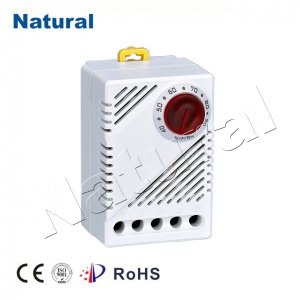Thermostats and hygrostats are essential devices that play a crucial role in maintaining the comfort and efficiency of our living spaces. These devices help regulate temperature and humidity levels, ensuring a pleasant and healthy indoor environment. In this article, we will delve into the functions, benefits, and applications of thermostats and hygrostats, shedding light on their importance in our daily lives.

Thermostats: Precision Control of Temperature Thermostats are devices designed to control the temperature of a space by monitoring and adjusting heating or cooling systems. They serve as the brains behind your heating, ventilation, and air conditioning (HVAC) system, helping to maintain a consistent and comfortable temperature indoors. One of the primary functions of a thermostat is to sense the current temperature in a room. This is typically achieved through a sensor or a network of sensors strategically placed throughout the space. Once the thermostat knows the current temperature, it compares it to the desired temperature, also known as the setpoint. If the actual temperature deviates from the setpoint, the thermostat activates the heating or cooling system to bring the room back to the desired temperature. Modern thermostats often come equipped with advanced features such as programmable schedules, remote control via smartphones, and even machine learning algorithms that adapt to your preferences over time. These features not only enhance comfort but also improve energy efficiency, as they enable you to optimize your HVAC system’s operation. Hygrostats: Managing Humidity Levels While thermostats focus on temperature control, hygrostats are designed to regulate humidity levels. Maintaining the right level of humidity in your living space is crucial for your health and well-being, as well as for the preservation of your home and belongings. Hygrostats rely on humidity sensors to measure the moisture content in the air. These sensors can detect if the humidity level is too high or too low. If the humidity exceeds the desired range, a hygrostat can activate a humidifier or dehumidifier to restore the optimal humidity level. Maintaining proper humidity levels can prevent issues like mold growth, dry skin, and even damage to wooden furniture and musical instruments. Applications and Benefits Both thermostats and hygrostats have a wide range of applications beyond our homes. In industrial settings, they are used to control environmental conditions in manufacturing plants, data centers, and warehouses. In agriculture, they help monitor and manage temperature and humidity in greenhouses and storage facilities. The medical field relies on these devices to create controlled environments for laboratories and hospital rooms. The benefits of these devices extend beyond comfort and health. Properly managed temperature and humidity levels can lead to significant energy savings. By optimizing heating, cooling, and humidity control, you can reduce energy consumption and lower utility bills. Additionally, these devices can prolong the lifespan of equipment and improve the overall efficiency of various processes. Conclusion Thermostats and hygrostats are unsung heroes in our daily lives, silently working to keep us comfortable and healthy. They offer precision control over temperature and humidity, contributing to our well-being, energy efficiency, and the preservation of our belongings. As technology continues to advance, we can expect even more sophisticated and user-friendly versions of these devices, further enhancing our quality of life. So, the next time you adjust the thermostat or check the humidity level, remember the vital role these devices play in creating a comfortable and efficient living environment.